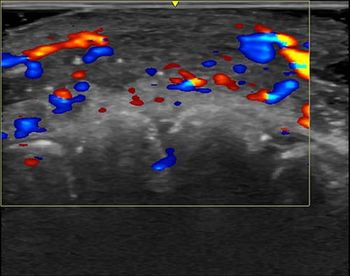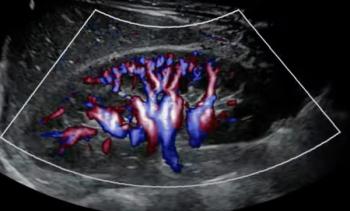
IHE reaches for the electronic health record
The Integrating the Healthcare Enterprise initiative has released a series of new guidelines that should help secure its role in the move toward electronic health records. Medical information technology is tackling a growing list of issues related to this effort, according to a panel presentation at the CARS conference.
The Integrating the Healthcare Enterprise initiative has released a series of new guidelines that should help secure its role in the move toward electronic health records. Medical information technology is tackling a growing list of issues related to this effort, according to a panel presentation at the CARS conference.
A panel discussed the impact of the IHE, now in its seventh year, on the development of interoperability in medical imaging and informatics. From left, Dr. Frits H. Barneveld Binkhuysen, president of the Radiological Society of the Netherlands, Cor Loef of Philips Medical Systems, and Nikolaus Wirsz of Siemens Medical Systems.
The guidelines, which the IHE is calling "integration profiles," are designed to guide vendors and users as they make development and purchasing decisions. The profiles initially covered issues in interoperability of medical imaging systems, but are now addressing other medical specialties and, more recently, information technology.
Developing electronic health records has become a key focus of global medical informatics efforts. Four new profiles released by the IHE in 2004 and tested this year can help smooth information exchanges in the broader healthcare enterprise, said presenter Cor Loef of Philips Medical Systems. One in particular - cross-enterprise document sharing - is the first step toward an inter-institutional longitudinal electronic health record, he said.
The cross-enterprise document sharing profile is intended to allow safe and easy sharing of medical documents between different healthcare enterprises. It is designed around a document registry that maintains a database of all known clinical documents, their location, and metadata describing them. The profile defines transaction standards that determine how users provide data and access it in different repositories.
Other recent IT profiles include:
*Personal white pages: collects and provides access to basic information about the workforce members. It is intended to provide fast access to workflow information such as phone numbers and e-mail addresses.
*Audit trail node authentication: defines basic security features for healthcare IT infrastructure, including system-to-system authentication, encrypted network communication, and a security audit trail repository.
*Patient demographics query: enables applications to query a central patient information server for a list of patients based on user-defined search criteria. It is intended to allow users to select from the list in lieu of retyping patient data.
Newsletter
Stay at the forefront of radiology with the Diagnostic Imaging newsletter, delivering the latest news, clinical insights, and imaging advancements for today’s radiologists.




























